To Chop or Not to Chop?
Even though pillow chopping is often referred to as a trend, it’s a topic that has stirred the design pot for quite a few years and is still alive and well here on Houzz. As a regular Houzz reader, I’ve noticed the debate over chopped pillows in comments from years ago as well as recently.
In one ideabook, 9 Pointers for Perfectly Styled Pillows, the Comments section quickly filled with thoughts on chopping. One remark, in particular, left a lasting impression on me. The Houzzer said, ”It’s cracking me up that the takeaway from this whole [ideabook] is the karate chopping of pillows! Follow-up look book: “To chop or not to chop?”
OK, reader, I’ve decided to accept your challenge. Here’s a closer look at the pros and cons of pillow chopping.
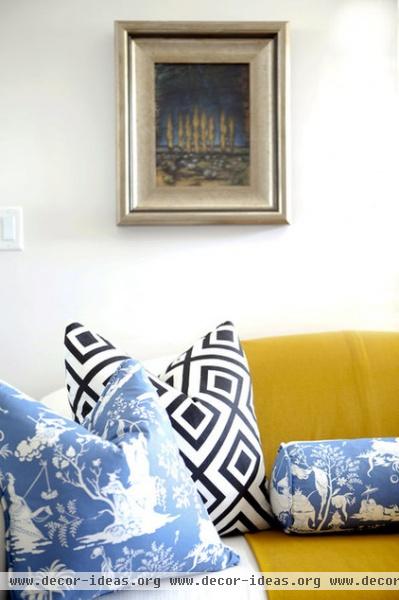
For those who aren’t familiar with the term “pillow chopping,” it describes a way of shaping pillows. A chopped pillow is achieved by fluffing a feather- or down-filled pillow and using a karate chop motion to create an indentation in the top.

This photo illustrates the crisp, tailored look of a chopped pillow formation.

This semiformal space embraces the contrived shape of the chopped pillow. Flanking the fireplace, these large-scale, graphic-patterned, lightly chopped pillows are a key focal point.
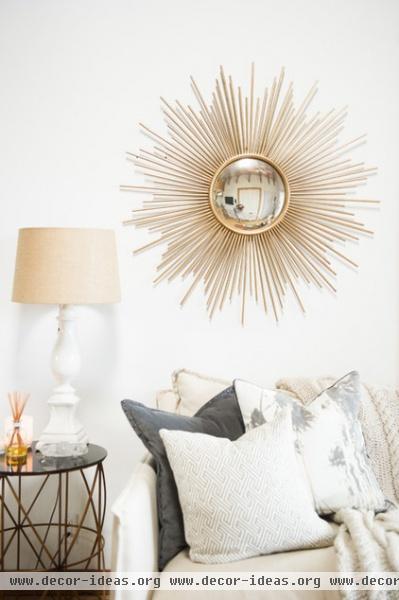
Chopped pillows don’t always have to look formal. These look neat and tidy, yet because they’re overlapped, they invite relaxation.
The indentation on the top of the gray velvet pillow showcases the incredible softness and texture of the fabric.

Fabrics with sheen can look amazing with a slight chop. In this space the soft dent enhances this luxurious fabric by creating shadows and allowing light to hit the pillow from different angles.
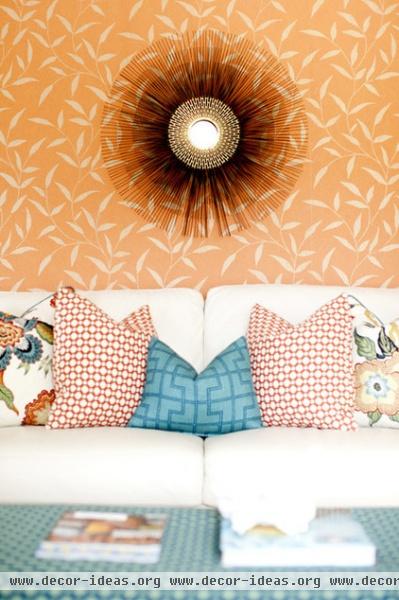
This collection of toss pillows in different patterns and prints is unified by the consistent use of a chop. The V shape created by firm chops to the toss pillows draws the eye upward to rest on the fabulous sunburst mirror.

Chopping isn’t limited to the tops of pillows. At first glance it appears that no chopping has occurred in this room. However, if you look carefully, you can spy a slight dent in the sides of the pillows.

This room is a perfect example of mixing different chopping styles. Some of these pillows have a chop and some do not. It just goes to show that you don’t have to be a chopper all the time.
The furry pillow and patterned pillows hold a lovely shape without a chop, while the turquoise pillow looks special with a chopped form.
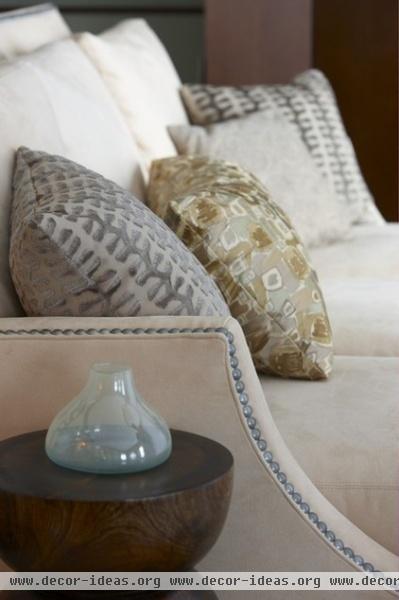
Not all pillows are created equal. Depending on the type of fill and the weight of the fabric, some hold their shape longer than others, while some need more frequent fluffing.
Heavyweight upholstery and decorator fabrics like these are structured enough to keep the shape of a quick fluff for quite a while. Just picking up a pillow like this and giving it a quick shake or dropping it can give it a full, neat shape that will last.

The type of insert your pillow has may help you decide if you want to chop or not. Here the pillows appear to have a feather or down insert with a high fill count. They look full and plump without chopping.
A foam insert is definitely not a good contender for a pillow chop. Pillows with foam filling tend to be more ridged and usually look good without frequent fluffing. If you overmanipulate them, in fact, they can get lumpy.
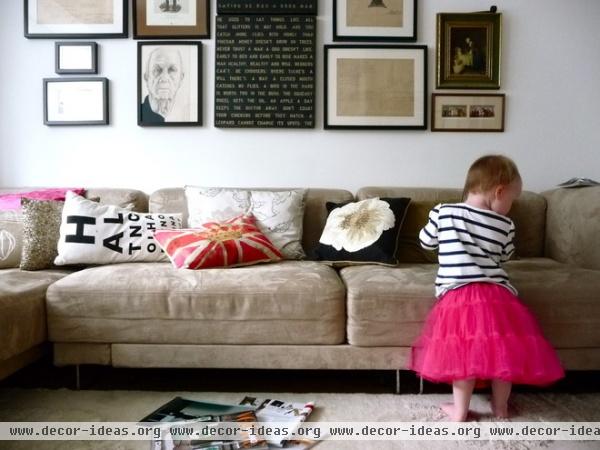
These pillows looks amazing in their natural form — comfortable, inviting and easy to live with. They are a huge design element, yet they look casual and unforced.

The black and white pillow plays a big role in this simple but eye-catching design. The rectangular shape allows the bold graphic vertical stripe to do its job. The pillow might have had less impact if the shape had been altered with a chop.
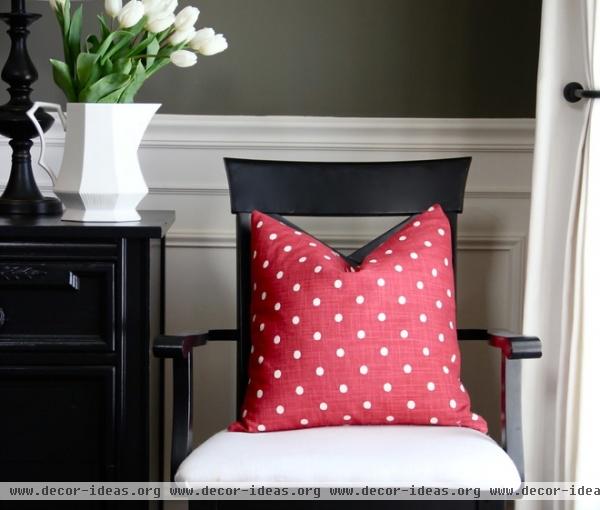
As a designer, I fall on both sides of the chopping fence. Using a pillow from my own home, I’d like to show what a big difference a pillow’s shape can make.
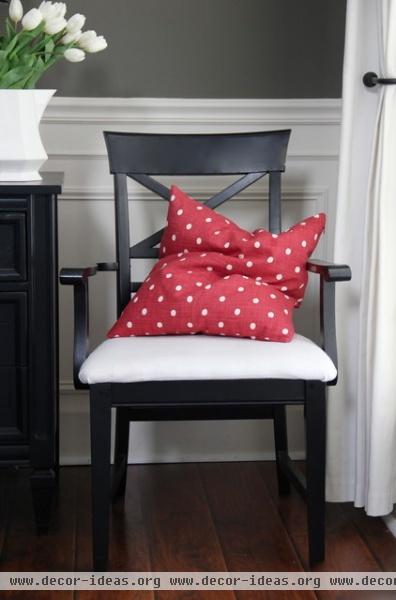
This pillow rests on an extra chair that sits next to the buffet in my dining room. On occasion someone will sit in this chair to tie their shoes or talk to me while I set the table. Afterward, the pillow is left looking like this.
As much as I wish I could say it doesn’t bother me, it wouldn’t be the truth. I usually end up fluffing it.
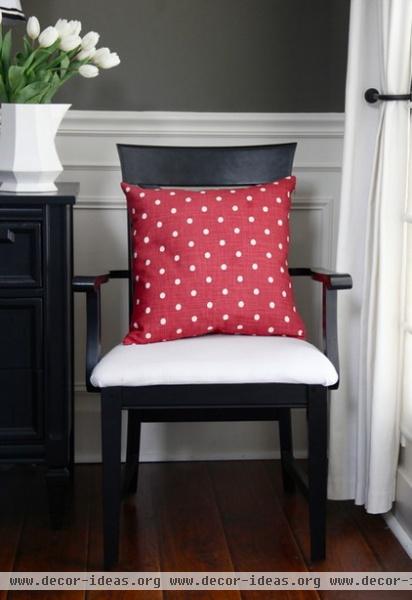
This pillow in particular has a nice plump fill, so it doesn’t require a lot of manipulation to fluff it back into shape. A quick drop to the floor and a soft tap on each side do the trick. Stopping there leaves me with this look.
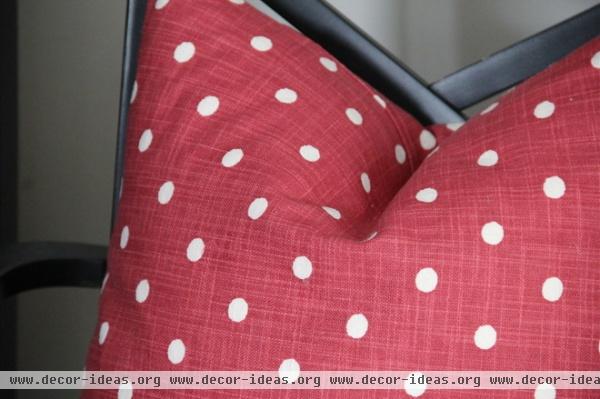
After a light chop, it takes on a slightly different shape. When pillow chopping for myself or for clients, I prefer a soft hand that yields a small dent.
Not every pillow in my home gets chopped, but this one usually does. I like the way the chopped shape mimics the X-back of this particular chair.
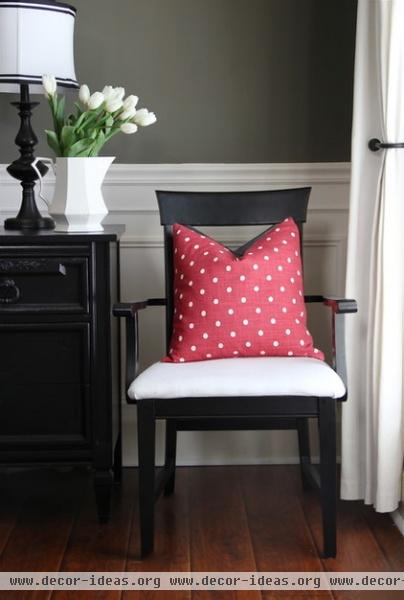
Wherever you stand on the pillow-chopping issue, neither way is right or wrong from a design standpoint. It’s simply a personal style preference. In truth, the secret to a nice-looking pillow has more to do with the fabric used to cover it and the quality of the insert than in the formation. The higher the fill, the better your pillow will look — chopped or unchopped.
Let the comments begin! Where do you stand on the chop-or-not block?
More: Mix Pillow Patterns Like a Pro: 17 Foolproof Themes












